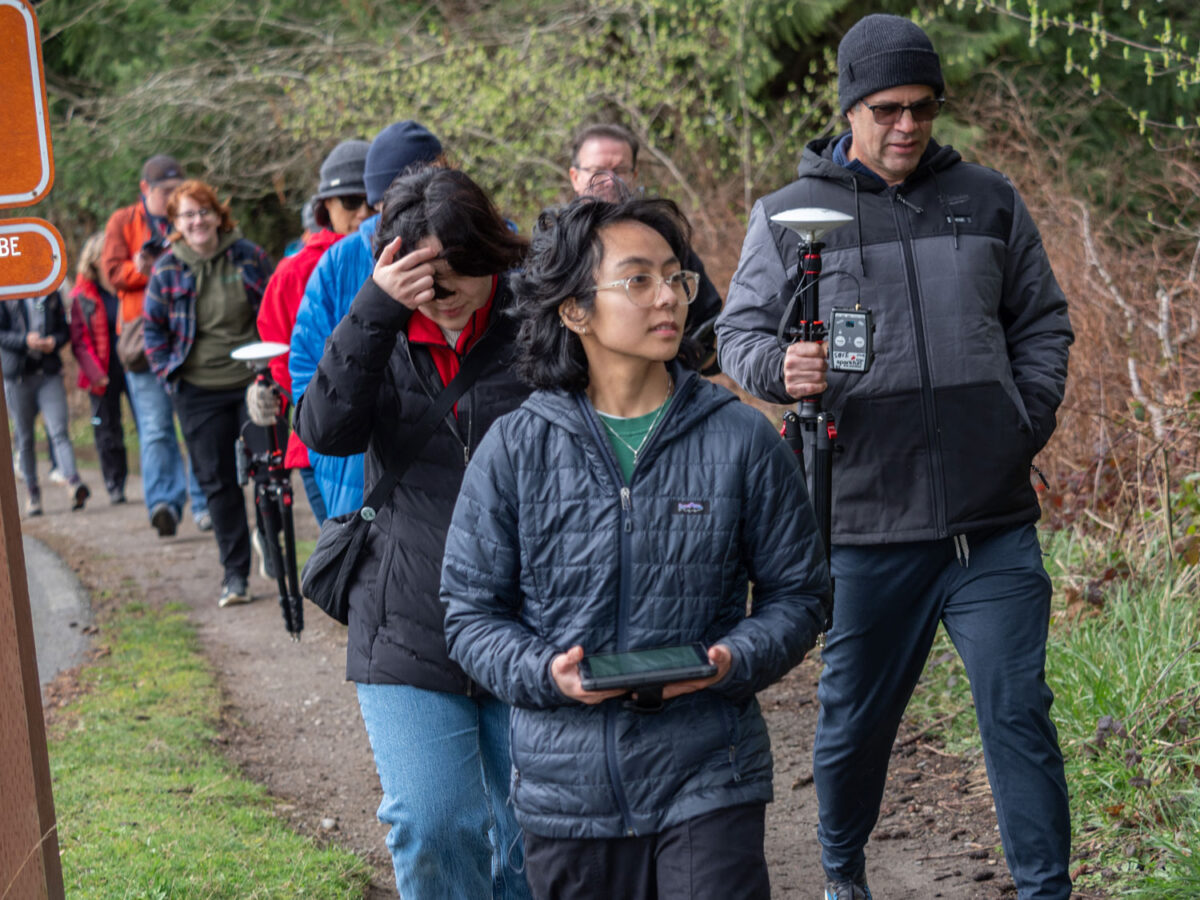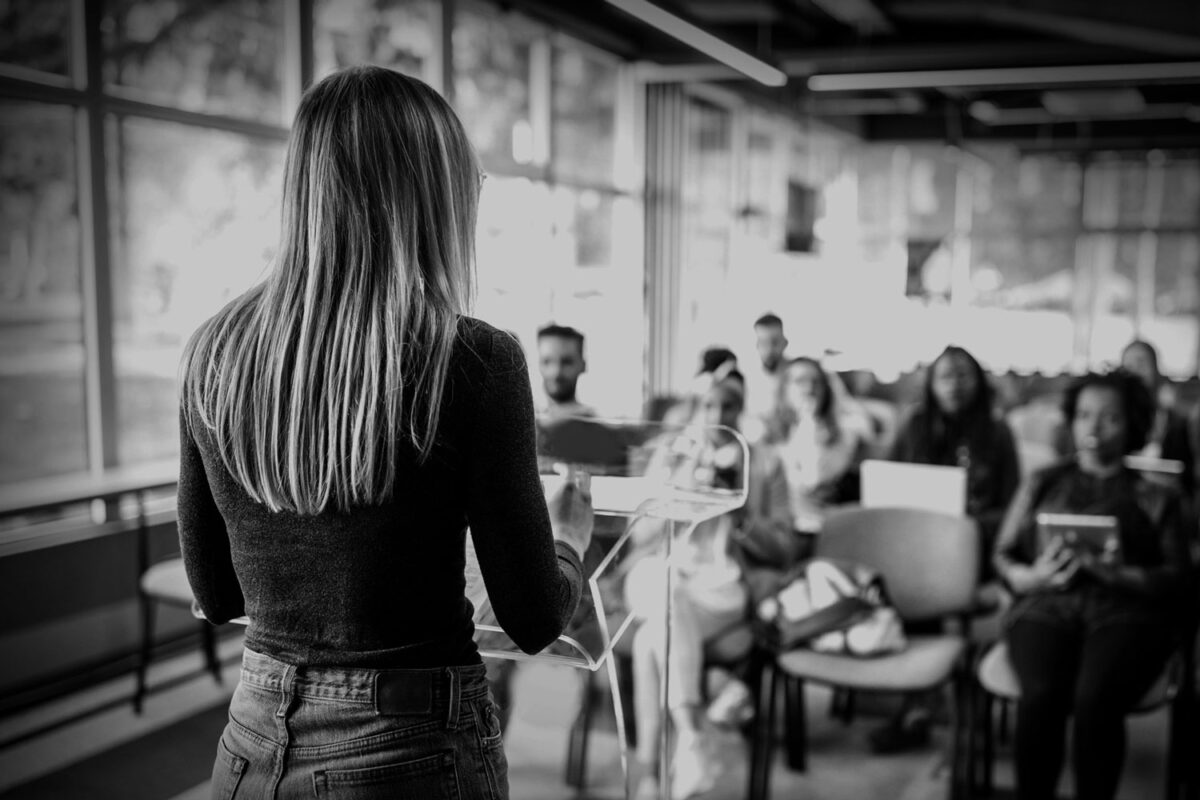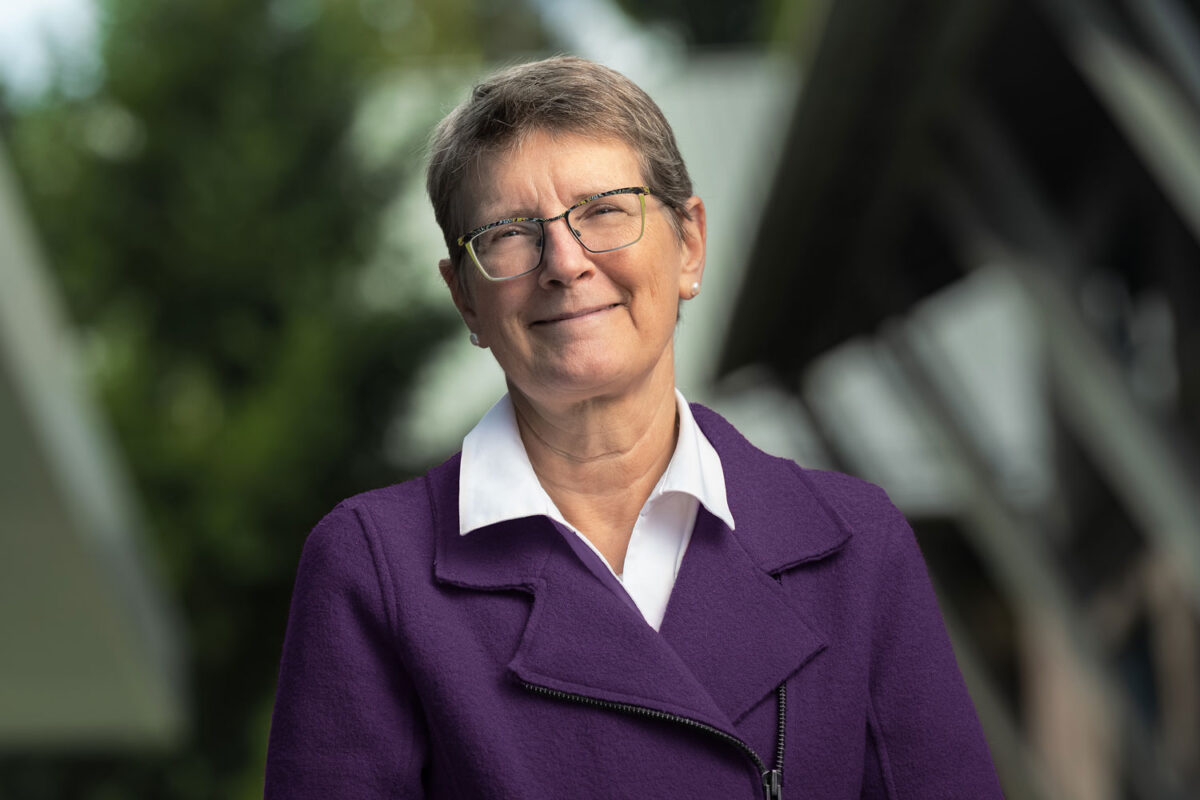By Douglas Esser
Senior Lecturer Jeff Jensen toys with the idea of not booking a classroom for the Salmon and Society course. Students spend most of their time on field trips and projects; why not all the time?
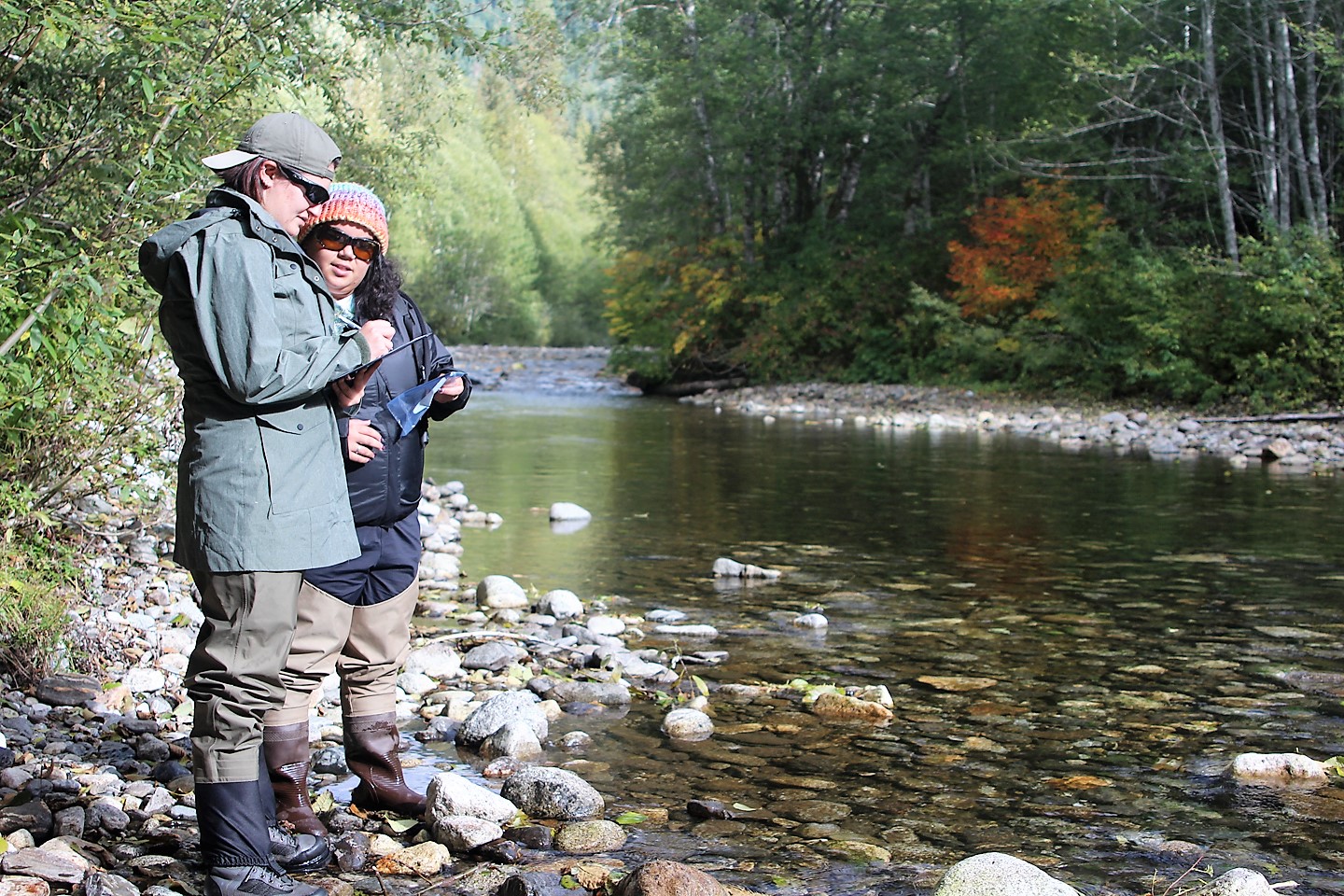
Because, at some point, everybody needs to come together for reports and tests, no matter how much you’d rather be face-to-face with fish, says Jensen, an ichthyologist in the biological sciences division of the UW Bothell School of Science, Technology, Engineering & Mathematics.
Through half-day and overnight field trips in western Washington and projects in the campus wetlands, Salmon and Society explores salmon from biological, cultural and legal perspectives. Students meet state and tribal resource managers, politicians and riverfront homeowners.
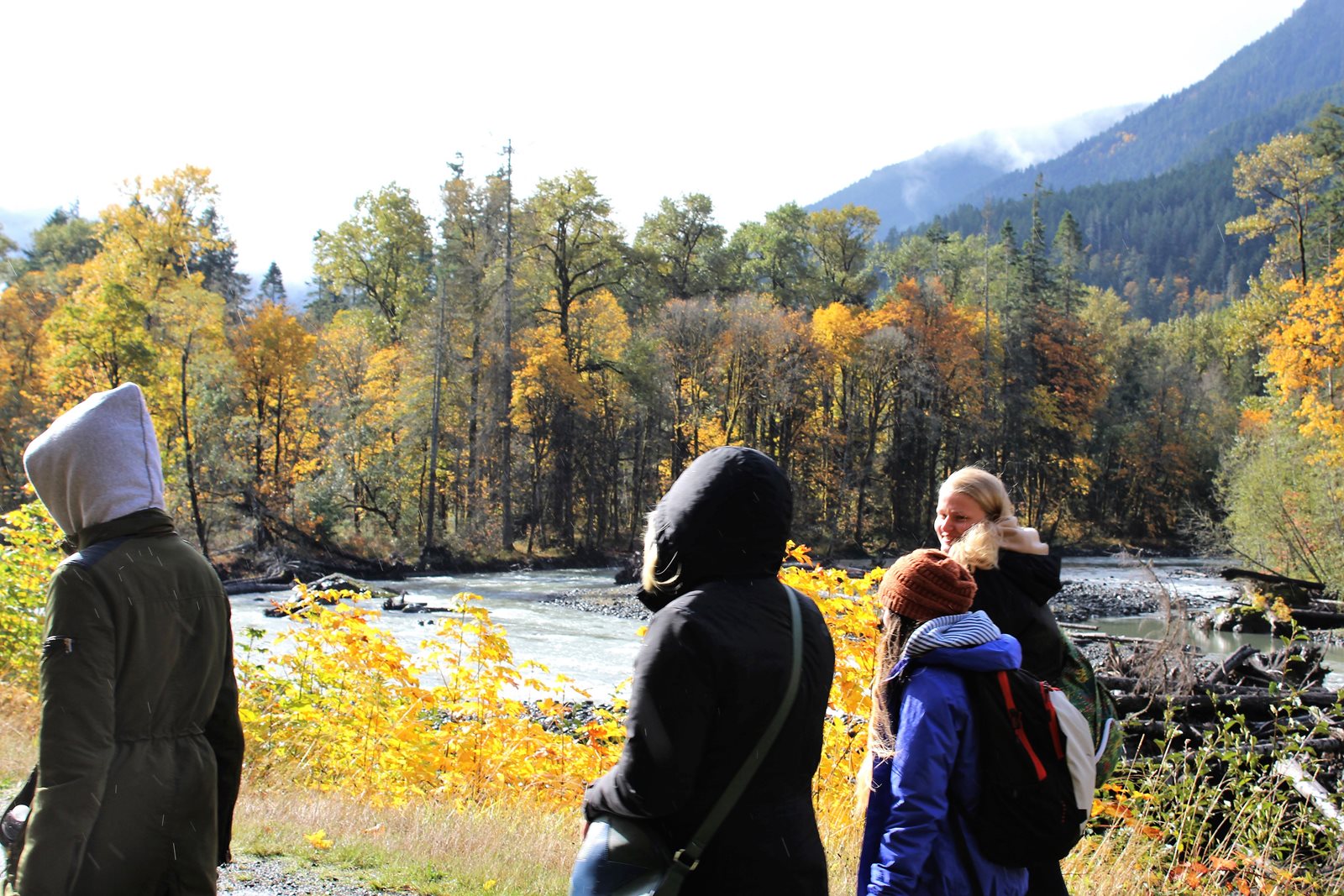
“Anything that touches salmon has a lot of federal, state and local laws, and treaty rights,” Jensen says.
The course is held in the fall when salmon are returning to streams. Bring your boots.
See more field trip photos courtesy of Jeff Jensen on Flickr.
“What’s cool about his class is hands-on field work. Most of the time we’re out doing things we potentially could do in jobs in the future,” said Brianna Wrightson (biology ’18).
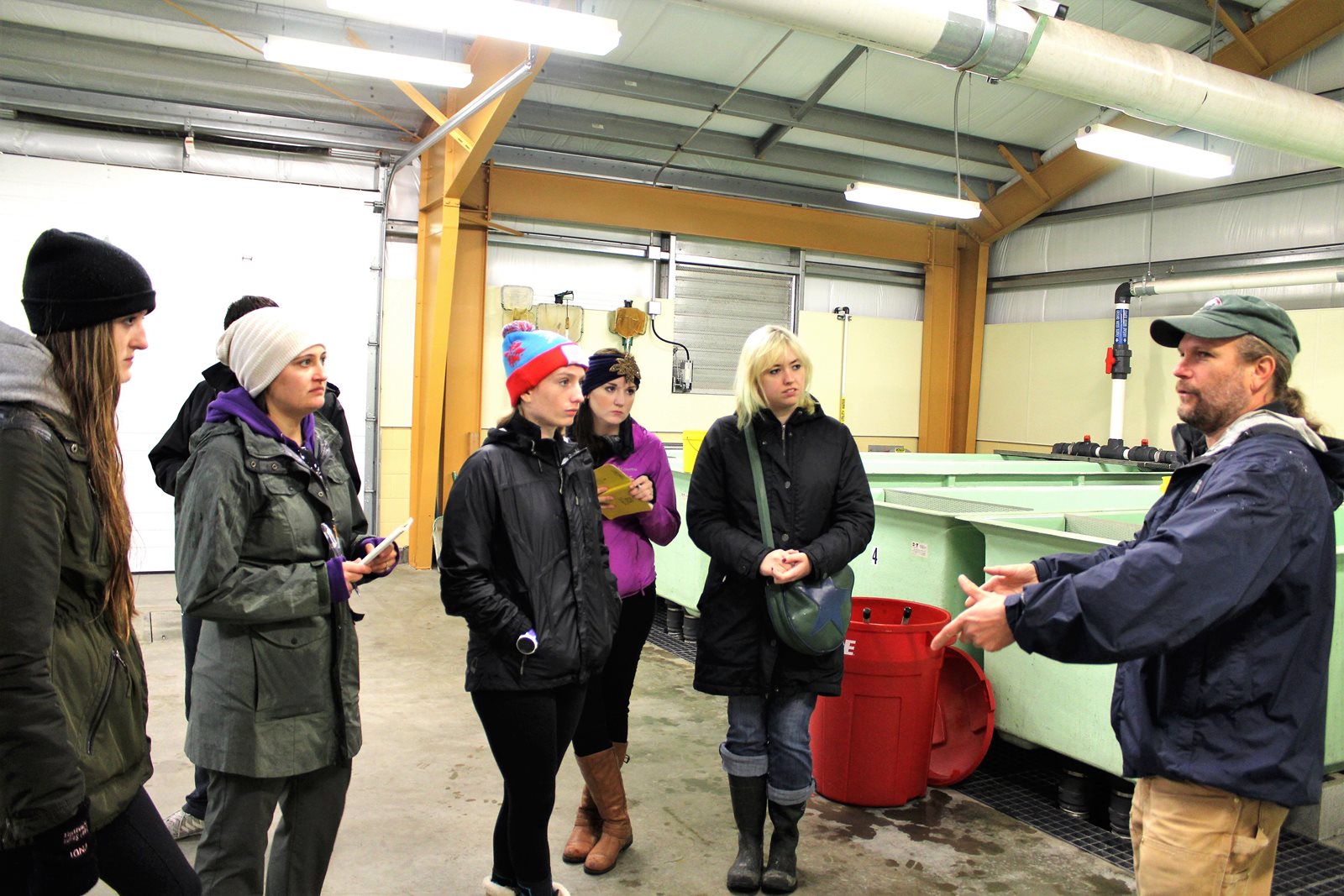
“We're actually talking to people in the field who do these jobs every day,” said Quinn Moldestad, (biology ’18).
Wrightson has volunteered at the Woodland Park Zoo and would like to work for the state Department of Fish and Wildlife. Moldestad has worked on a fish processing trawler in Alaska and plans to go to graduate school in restoration ecology.
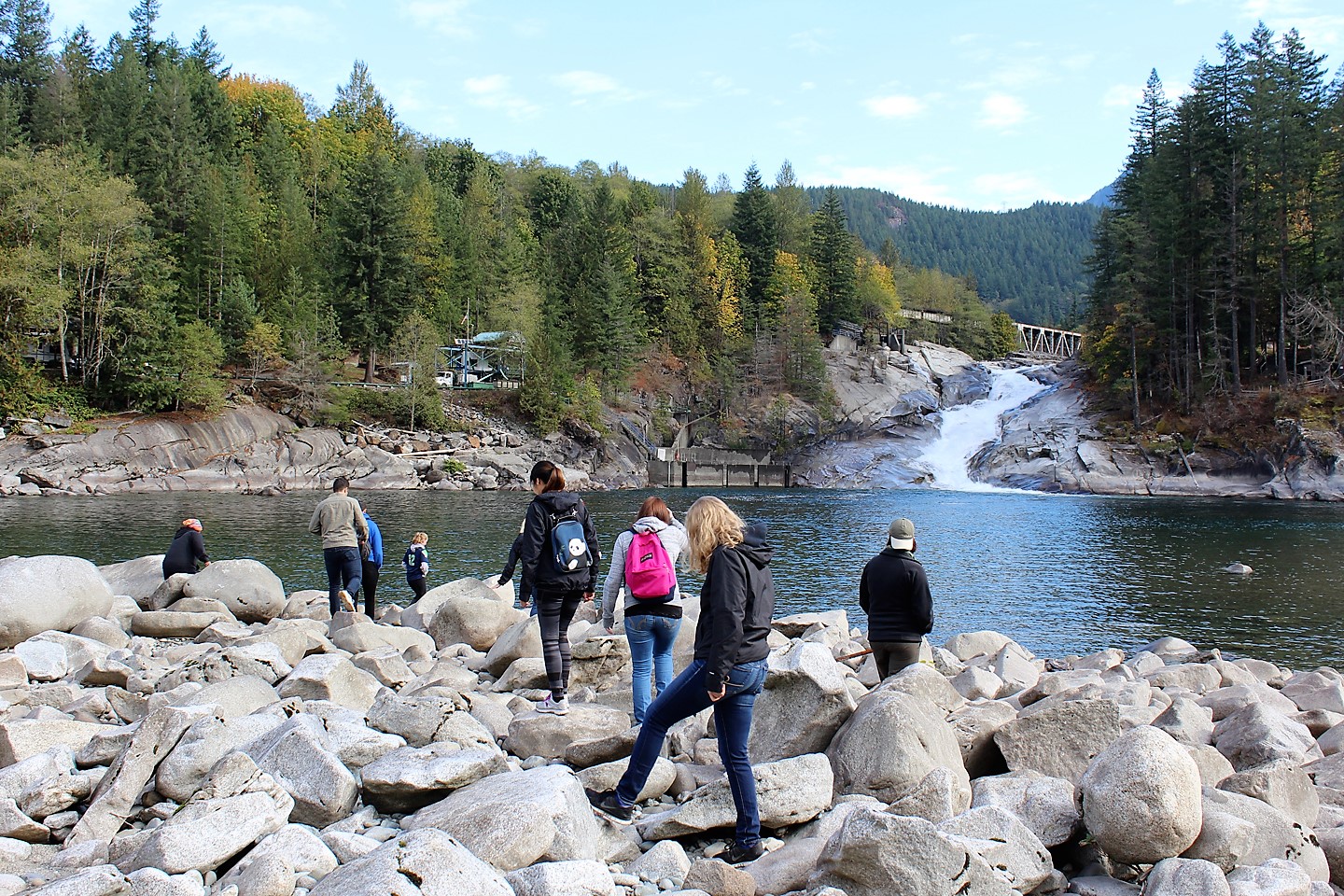
Students are not required to go on all the overnights, but many do because they enjoy them. Some of the trips start out as required half-day trips. Here are a few:
- Visit with landowners along the south fork of the Skykomish River near Index who oppose a hydroelectric project near Sunset Falls. Students learn about interactions with a power company and about county and federal regulators.
- Tour a “trap and haul” facility near Sunset Falls that needs repairs. Students see fish hoisted up and dumped above the falls.
- Hike the Elwha River on the Olympic Peninsula, which has been opened to salmon by the removal of two dams. Students talk to Washington state Department of Fish and Wildlife biologists and Klallam tribal hatchery managers and discuss estuary restoration.
- Meet Nisqually tribal biologists virtually at the site where the Medicine Creek Treaty was signed in 1854. The treaty still affects salmon management in the Puget Sound area from federal negotiations to local culvert replacements.
Throughout it all, Jensen guides students to their own discoveries.
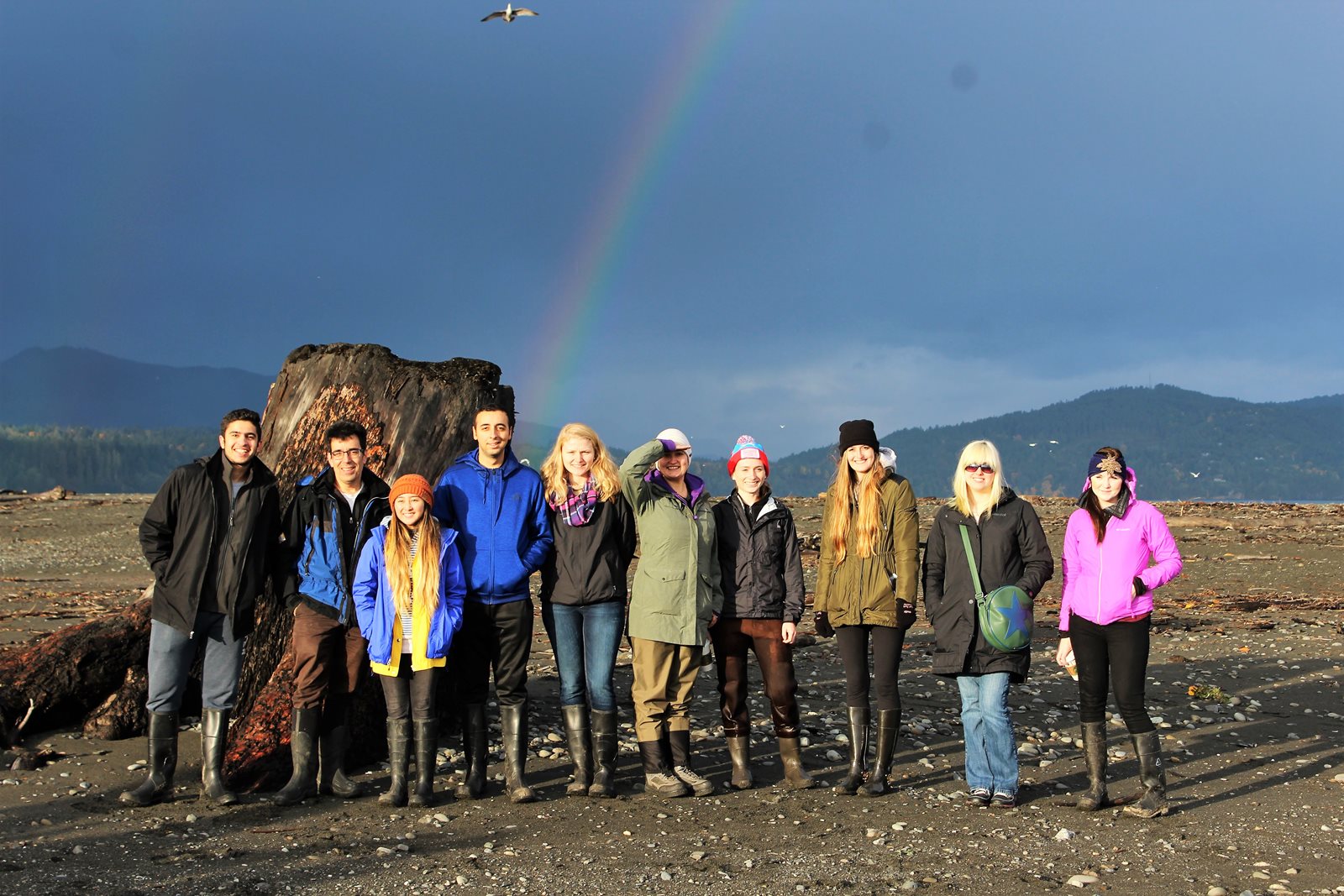
“I put you in a position to learn about salmon, not by listening to me but by having a reason to learn about it yourself,” Jensen said.
This is the fourth year Jensen has taught the course. In between field trips, the 12 students work on projects:
- One group of students is working on a video system to monitor salmon swimming through the campus wetlands.
- Another group is studying the impact of beaver dams in the wetlands. What percent of salmon make it over the dam? What are the costs versus the benefits of beaver dams for salmon?
- A third group is building a remote site fish incubator that would go in North Creek upstream of the wetlands. Plans call for monitoring systems and a way to count juvenile salmon as they leave.
Wrightson and Moldestad are both working on the incubator. Moldestad is planning the technology, and Wrightson is applying for permits with state agencies. Both recommend the Salmon and Society class – even for non-biology majors.
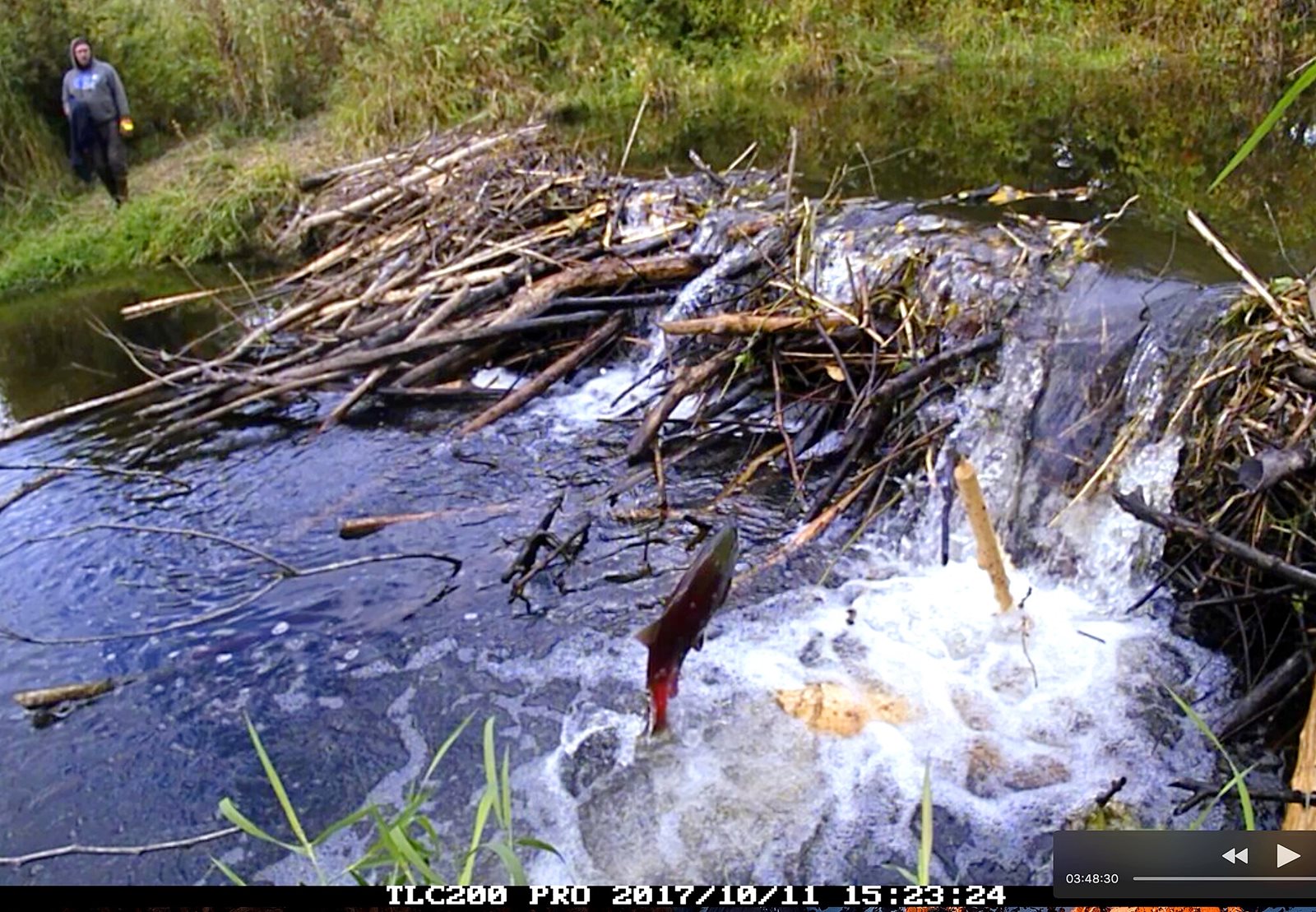
“It shows you what real scientists do,” said Moldestad.” And, says Wrightson, “It’s super fun.”
Jensen’s own research involves restoring kokanee salmon in the Lake Washington watershed. The kokanee is a small landlocked salmon that resembles a sockeye with a red body and green head. Pioneers saw streams crowded with the fish. Native kokanee remain in Lake Sammamish, but the fate of Lake Washington’s native kokanee is unclear.
A couple of Lake Washington kokanee that were collected as samples in the 1880s are preserved in a jar of alcohol in Jensen’s office. The ghostly 130-year-old kokanee are on loan from the Smithsonian Institution in Washington, D.C. Jensen intends to take DNA samples and study the anatomy of these specimens to help identify any of their descendants still living in Lake Washington.
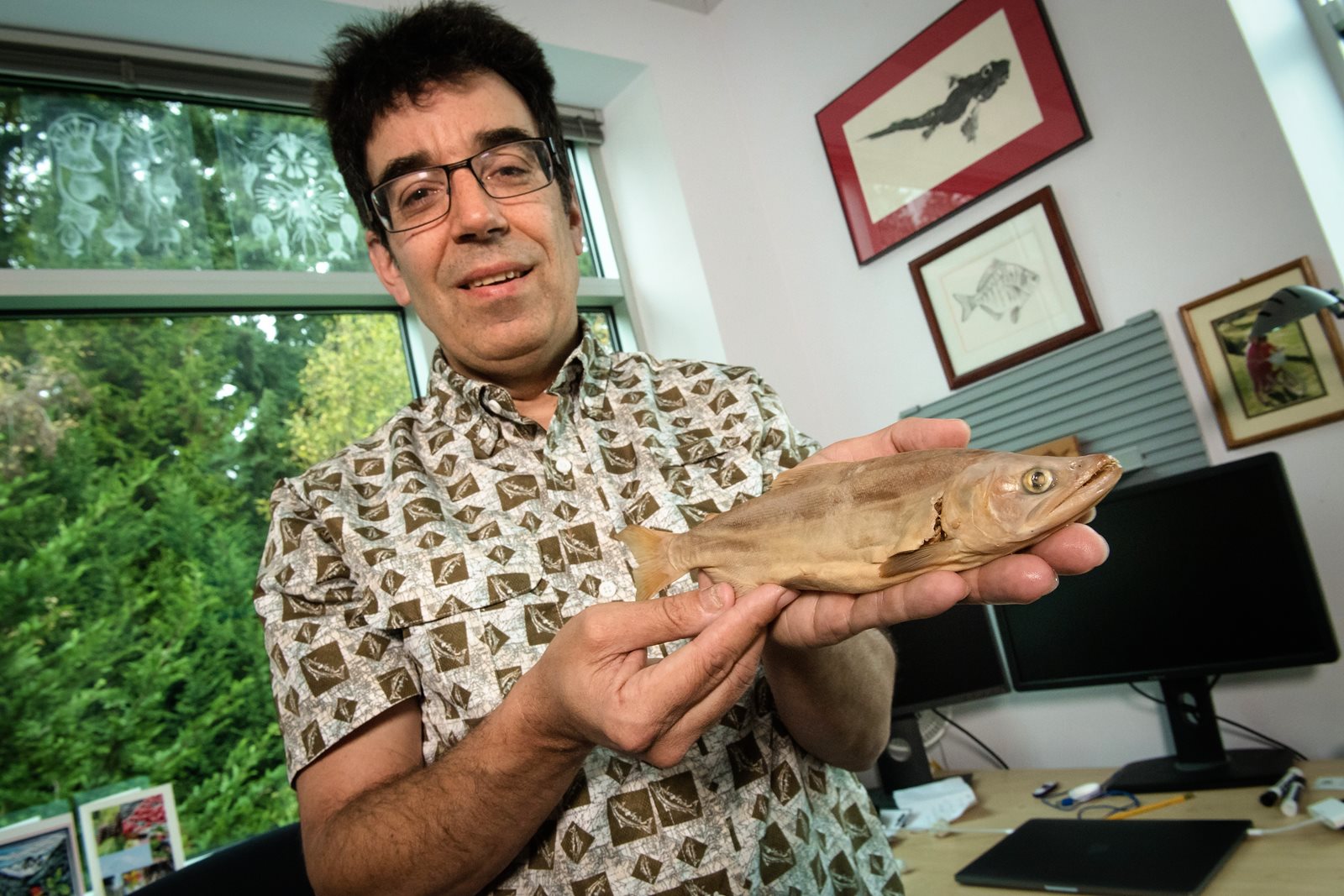
Photo: Jeff Jensen with preserved 130-year-old kokanee. (Marc Studer photo)

